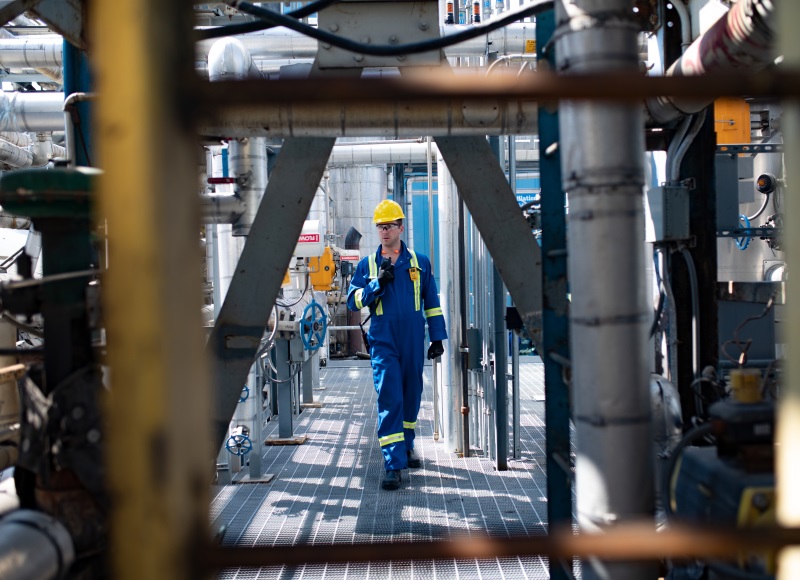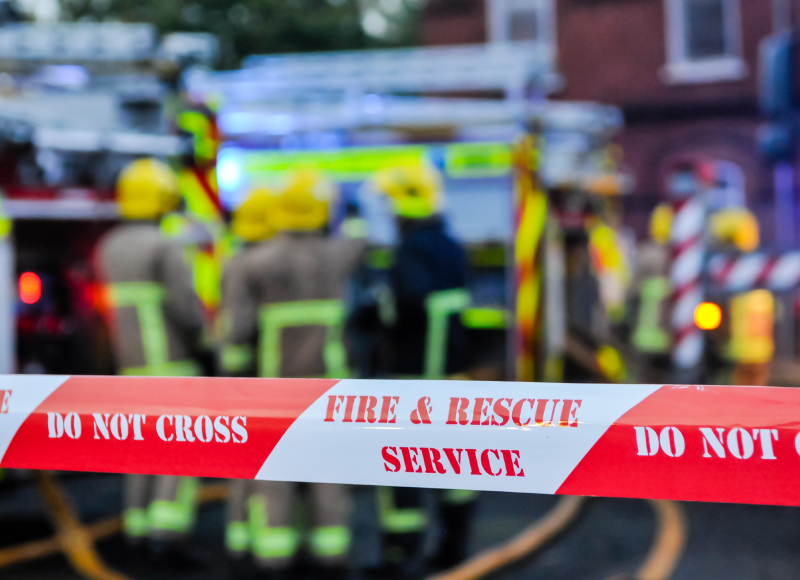

Lone workers are people who cannot be seen or heard by colleagues or supervisors. While they work, there is no direct supervision. In addition to injuries or illness, lone workers can also fall victim to violence. It is estimated that there are between 123 and 205 assaults every day on lone workers. Lone worker safety is of concern, because nobody else is present to help them and other people are not aware of any crises they may encounter.
Examples of lone workers
No matter what industry you work in, the basic criteria that make a person a lone worker apply. Simply put, nobody is present to ensure that they’re safe. For example:
- An office worker who remains at work after everyone has gone home
- A person who works alone in a small shop or kiosk
- A security guard on patrol around a warehouse
- An engineer working on a wind farm
- A truck driver on the road
- A maintenance technician who repairs equipment at remote locations or after hours
- An agricultural worker performing a task away from other teams or supervisors
As you can see, anybody who does solo work, even if it’s only for part of the day, is a lone worker.
What are the risks for lone workers?
Broadly speaking, a lone worker is at risk if they are injured, suddenly fall ill, or fall victim to violence since nobody may be aware of their circumstances. For example, a lone worker who is badly injured may not receive first aid or a security guard may be attacked while they are at work.
Other possible risks may come from a lack of access to facilities. For example, a pest control operator may not have access to clean water in the event of contact with pesticides or a truck driver may not have access to facilities that allow for proper rest breaks.
Lone working and the law
It’s not illegal to expect employees to work on their own. However, the law requires employers to perform careful risk assessments. If it appears that there are significant risks for a person who works alone, it may be necessary to specify that a task may not be performed by a lone worker – or, if appropriate, other measures should be taken to mitigate risks. In certain industries, specific laws forbid lone working, for example, divers must be supervised while dives are in progress.
Lone worker health and safety responsibilities
Employers remain responsible for safeguarding lone workers, but worker cooperation is required. For example, they should use their reason to protect their own safety and the safety of others. They should follow required safety procedures, use equipment as specified, and report any safety-related incidents.
How to keep lone workers safe
Assess the risks
The aim of your risk assessment is to determine whether a lone worker would be at greater risk than other employees. If they are, steps must be taken to mitigate risks. Consider the tasks that the worker must perform and whether a lone worker will be safe performing them. Considerations include access to the work site, safe handling and use of tools and equipment, and possible risk of violence. The employer must take precautions to address foreseeable risks.
Take individual factors into account and provide training
When assessing risks, the individual employee should be taken into account. For example, a person who suffers from certain health conditions may not be medically fit to do lone work. It’s also important to ensure that the worker is aware of the risks they face and knows what to do to protect themselves as well as how to handle an emergency. A lone worker should know when to ask for help and advice and feel free to stop work if they believe they are subject to elevated risk that falls outside the usual scope of their work. This may require training and thorough briefing.
Consider the need for supervision
Although lone workers, by definition, work alone, there should always be some level of supervision. What this consists of depends on the risk assessment and the nature of the task as well as the worker’s experience and competence.
For example, a new employee may need to be accompanied while they are becoming accustomed to a particular type of work which they will later do alone. And, if a trained employee were to encounter a situation in which they are uncertain as to how to proceed, they should be able to reach out for advice or assistance.
The riskier a job is, the more supervision is required. For example, a lone worker may be perfectly safe when supervision is limited to periodic job-site visits. Their work is checked, and at the same time, the supervisor and worker can discuss any safety concerns. Other types of lone work may require more intensive supervision because they are riskier – and some tasks may be judged too risky for workers to tackle on their own.
Have a well-communicated lone work policy
Because the employer is ultimately responsible for worker safety, deciding what work can be done by lone workers is a matter for management. A clear lone work policy allows workers and their supervisors to remain aligned with lone working safety plans.
Measures to minimise lone worker risks
Your choice of measures to reduce lone worker risks depends on the results of your job-specific risk assessments. However, across all types of lone work, access to communication devices will be vital. Additional lone worker safety devices may include panic buttons, no movement sensors and alarms, automated distress messages and PPE.
Training that enables workers to implement safe working procedures and know what to do in an emergency is key. For example, standard operating procedures may be necessary to maximise lone worker safety. First aid training and equipment can help them deal with minor incidents or mitigate harm until help arrives.
Incident reporting is a vital tool for workplace safety. For instance, if a worker may have been injured in an incident, but wasn’t, reporting it allows health and safety management an opportunity to address the risk.
Finally, the risk assessment should indicate what type of emergencies lone workers may face and the worker should be trained to implement suitable emergency procedures if the worst were to happen.
Advancing lone worker safety with two way radios and BBPTT devices
With nobody being able to see or hear them if they experience difficulties at work, lone workers must have devices that allow them to call for help. This can even prevent accidents. For example, if a lone worker encounters an unusual situation and cannot ask for advice, they may forge ahead, putting themselves in harm’s way. And if they are in immediate danger or are ill or injured, they must be able to call for help without a second’s delay at the touch of a button.
Two-way radios can be life-saving devices, and Broadband Push to Talk Solutions allow lone workers to use a mobile phone style device in much the same way as they’d use a two-way radio. Several people can be alerted at once, so there’s less chance of a vitally important message being missed, and no delay in sending out what may be a distress call.
Radiocoms serve a wide range of industries, fulfilling their communications needs. Allow us to help you safeguard lone workers through robust and reliable communication solutions that match the requirements of your lone worker safety policies and that suit your working environments. Contact us for more information.
Read more
Let’s start a conversation
If you would like further information, or to discuss your requirements onsite:
Book An Appointment | Arrange A Quotation | Call 033 3939 0022







